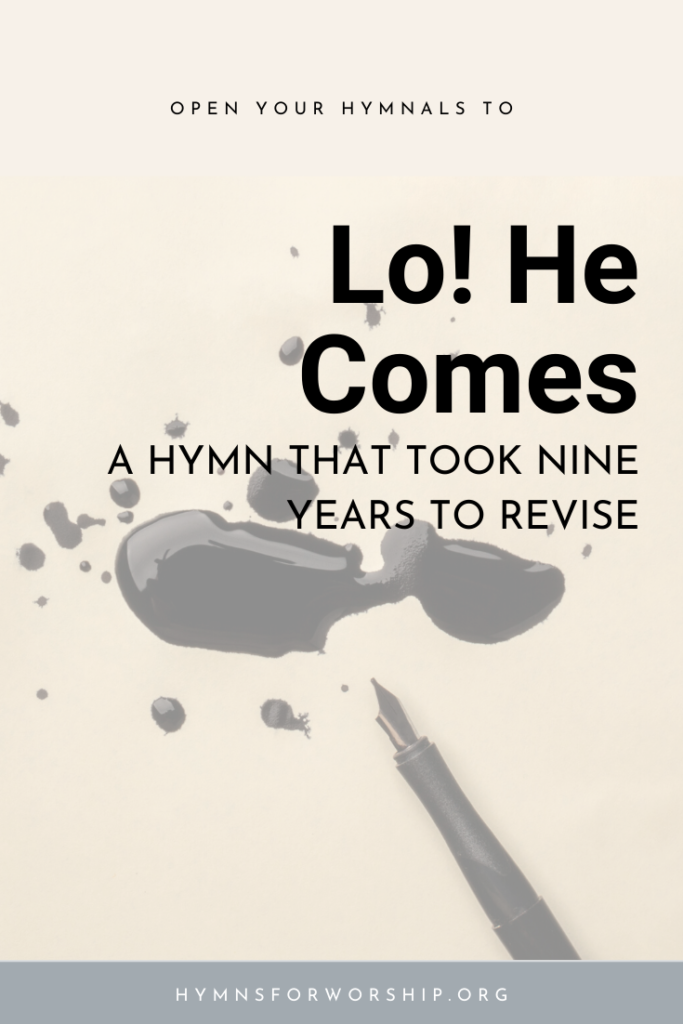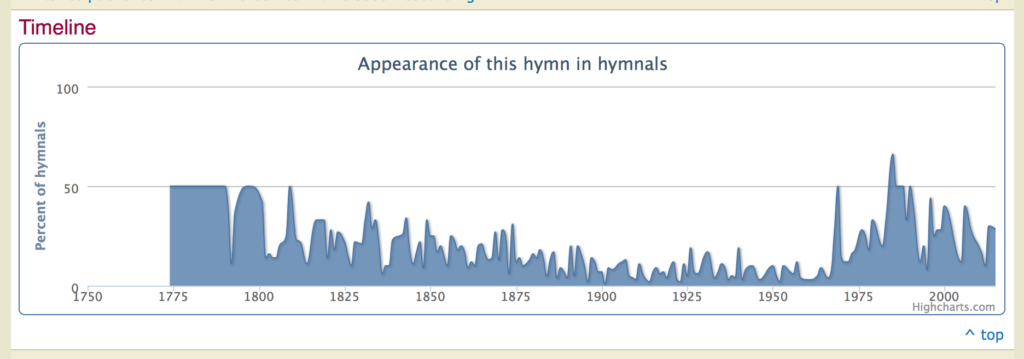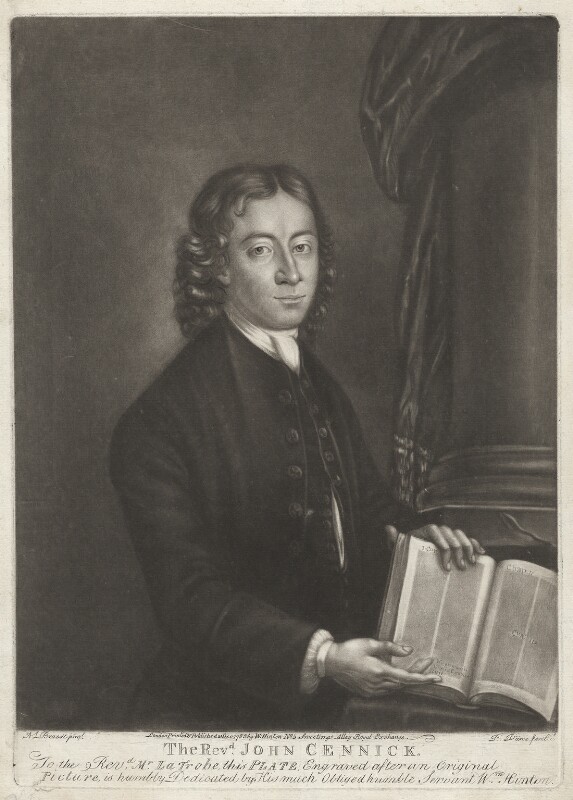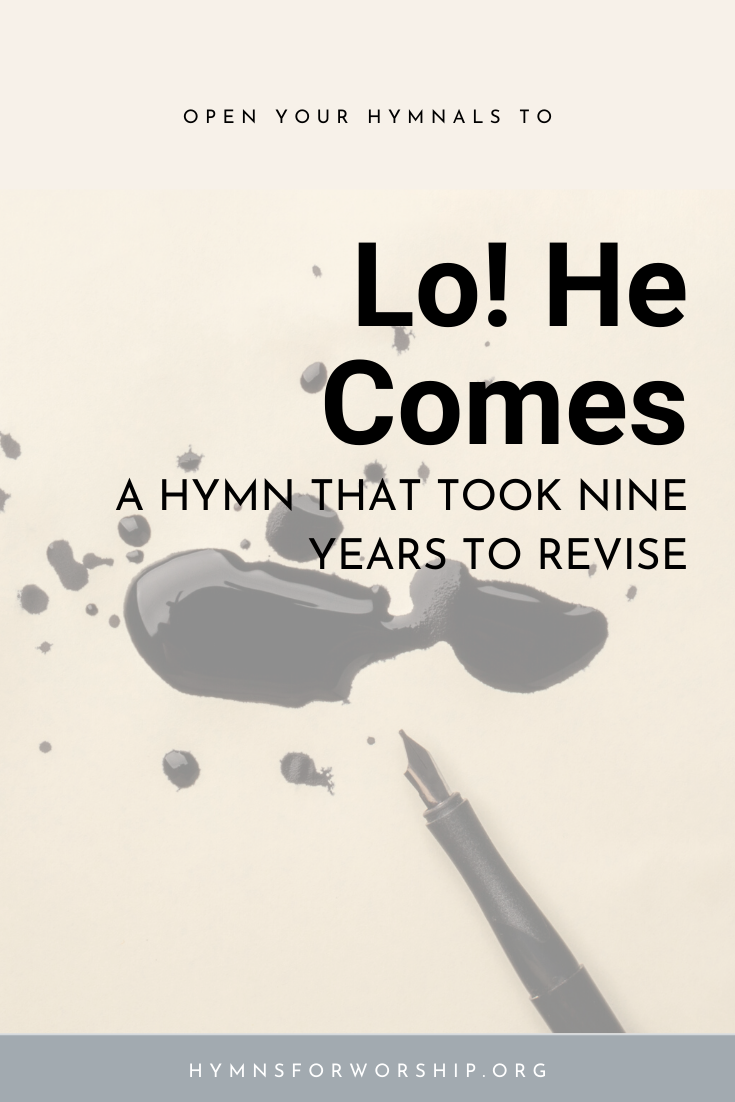
This hymn was really interesting to write about in that its words spanned nine years of revision by three (maybe four) different ministers who are all connected to each other. The general happenstance was this though — that after a conversion experience, this hymn was borne.
Interestingly, the first one who originated this hymn was converted upon hearing John Wesley’s sermon. The Wesleys themselves revised the hymn, then another minister who was also converted by Wesley’s messages, revised what Wesley had already written about this hymn!
The tune almost have the same story to tell. But I will not get ahead of myself.
There’s no sensational story behind its revision tho. Instead, the idea behind the words was what really mattered: Christ is coming very soon, let’s sing about it! The popularity of this hymn is astonishing, too. From its inception in 1752, it is still widely sung in 2018.
If you don’t know this hymn, you’re missing out!

The man who started it all

John Cennick was born in Reading, Berkshire on December 12, 1718. His early lineage comes from a family of Quakers although his parents were members of the Church of England. Although he was strictly brought up in an atmosphere of religion and piety, he suffered from depression as a young man.
However, at 19 years old, he came across the preaching of the Wesleys and was converted to the Methodist Church. At 21 years old, he began preaching to substitute his main career as a shoemaker. Six years later, he left the Methodist faith to join the Moravians.
Related Post: The Moravians — Their Beginnings, Music, and Mission
He spent many years as an itinerant evangelist in Ireland enduring great and often violent opposition. By the time of his early death, he had established over 40 churches. He was 36 years old when he died of a fever he contracted in London when he visited his sick mother, leaving behind a wife and two children.
Cennick’s version of ‘Lo! He Comes’
Cennick wrote many hymns, many of which were published in the Sacred Harp, Methodist hymnals and several Moravian hymnals.
His hymn “Lo! He comes” graphically illustrates the great second coming of Christ. This hymn was an inspiration for John and Charles Wesley and they proceeded to write their own version as well. Hymn analysts went ahead and compared the two hymns and described his stylistic approach this way,
“Cennick’s hymn is not worse than Wesleys’, but different. Written with an extravagant use of imagery, like a baroque ceiling, it dazzles the mind with its flights of evangelical imagination.”
Another historian simply described it as ‘wildly enthusiastic.’
1. Lo! He cometh! countless trumpets
Blow before his bloody sign,
Midst ten thousand saints and angels,
See the crucified shine.
Hallelujah!
Welcome, welcome bleeding Lamb!
2. Now his merit by the harpers,
Through the eternal deep resounds!
Now resplendent shine his nail prints,
Every eye shall see the wounds;
They who pierced him
Shall at his appearing wail.
3. Every island, sea, and mountain,
Heaven and earth shall flee away!
All who hate him must, ashamed,
Hear the trump proclaim the day:
Come to judgment,
Stand before the Son of man.
4. Saints, who love him, view his glory,
Shining in his bruised face:
See him seated on the rainbow,
Now his people’s head shall raise:
Happy mourners!
Now on clouds he comes! he comes!
5. Now redemption, long expected,
See, in solemn pomp appear:
All his people, once rejected,
Now shall meet him in the air:
Hallelujah!
Now the promised kingdom’s come!
6.View him smiling – now determined
Every evil to destroy;
All the nations now shall sing him
Songs of everlasting joy.
O, come quickly!
Hallelujah! come Lord, come!
The Wesleys’ version

As you would expect from John and Charles Wesley, this poem is considered to scale in “heights of splendor, majesty, and mystery as described in Revelation.” (Michal Hawn)
Related Post: Charles Wesley — A Pastor, Poet, and a Light Bearer
The Wesleys did not reword Cennick’s poem. Rather, theirs would be considered an ‘imitation,’ a poetic technique common in the eighteenth century. They based it off of Cennick’s first line and independently wrote the rest of the lines, closely following the same idea, theme, meter, and phrases. As close as it was, they still maintained a Wesleyan voice and shouldn’t be confused with our 21st century understanding of plagiarism.
Upon closer inspection, while the Wesleys’ approach has an air of restraint and sensitivity (as compared to Cennick’s), they also used direct quotes from Bible verses that pertain to the second coming of Christ.
1 Lo! He comes, with clouds descending,
once for our salvation slain;
thousand thousand saints attending
swell the triumph of His train.
Alleluia! Alleluia! Alleluia!
God appears on earth to reign.
Revelation 1:7 – Behold, he cometh with clouds; and every eye shall see him, and they also which pierced him: and all kindreds of the earth shall wail because of him. Even so, Amen
2 Ev’ry eye shall now behold Him,
robed in dreadful majesty;
those who set at naught and sold Him,
pierced, and nailed Him to the tree,
deeply wailing, deeply wailing,
shall the true Messiah see.
Revelation 1:7 – Behold, he cometh with clouds; and every eye shall see him, and they also which pierced him: and all kindreds of the earth shall wail because of him. Even so, Amen
3 Every island, sea, and mountain,
heav’n and earth, shall flee away;
all who hate Him must, confounded,
hear the trump proclaim the day:
Come to judgment! Come to judgment!
Come to judgment, come away!
Revelation 20:11 – And I saw a great white throne, and him that sat on it, from whose face the earth and the heaven fled away; and there was found no place for them.
1 Thessalonians 4:16 – For the Lord himself shall descend from heaven with a shout, with the voice of the archangel, and with the trump of God: and the dead in Christ shall rise first:
4 Now redemption, long expected,
see in solemn pomp appear!
And His saints, by men rejected,
coming with Him in the air.
Alleluia! Alleluia! Alleluia!
See the day of God appear!
5 Yea, amen! Let all adore Thee,
high on Thine eternal throne;
Savior, take the pow’r and glory,
claim the kingdom for Thine own:
O come quickly, O come quickly,
Alleluia! Come, Lord, come!
Revelation 22:12 – And, behold, I come quickly; and my reward is with me, to give every man according as his work shall be.
Martin Madan’s altered version

Martin Madan was a legal professional when he heard John Wesley preach about preparing to meet the Lord. Leading a dissolute life up to that point, Madan was quickly converted and became an ordained deacon eight years after his conversion. A year later, he became a priest. He was also a chaplain in a hospital and was also in demand as an itinerant preacher.
As with many ministers during his day, he also dabbled in publishing hymnals. However, what Madan was really known for was changing the wordings of the Wesleys’ and Watts’ hymns to suit his Calvinist theology. In a bio written in the Canterbury Dictionary of Hymns, Madan was described to be most successful in ‘altering, piecing, and expanding the work of others.’
‘Lo He Comes,’ is one of the products of such innovation. In the SDA Hymnal, while we use majority of Wesley’s version, we also adapted the version with Madan’s alterations.
A slew of tunes
Even it’s original tune went through a series of revisions. The tune HELMSLEY is usually attributed to Thomas Oliver, who claimed to have based it off a tune he heard whistled on the streets. The tune he heard was apparently an Irish concert song entitled “Guardian angels, now protect me.” Again, Madan had his hand on revising and polishing the tune, which is the version most popularly used today.
It doesn’t stop at HELMSLEY, tho. Hymnary.org lists twenty-four other hymn tunes that were used for this text. The most popularly used aside from Oliver’s HELMSLEY was John Thomas Wade’s ST. THOMAS and Henry Smart’s REGENT SQUARE.
The editors of the SDA Hymnal went for the lesser-used tune, HOLYWOOD by John Francis Wade, a tune also used for this text in 93 other hymnals.
Personally, I like HELMSLEY the best because the grandeur of the tune perfectly captures the splendor of Christ’s second coming.
Here’s John Rutter’s magnificent arrangement using the HELMSLEY tune
I don’t know why the SDA hymn editors didn’t stick to the tune that it was originally partnered with. They may have their own reasons, but HOLYWOOD just doesn’t capture the essence for me. At the bottom right corner of the hymn, they also suggested BRYN CALFARIA as a more somber alternative.
Like this article? Share it!


